Mastering the Art of Turkish Mantı: A Flavorful Journey into Traditional Dumplings
Turkish cuisine is known for its rich flavors and diverse culinary traditions. One of the most beloved dishes that encapsulates the essence of Turkish gastronomy is mantı. Mantı, often referred to as Turkish dumplings, is a delicacy that has been enjoyed for centuries in Anatolia. This delectable dish consists of small pockets of dough filled with a mixture of ground meat, onions, and various spices. The dumplings are then served with a flavorful tomato sauce, yogurt, and melted butter, creating a symphony of tastes that will transport you to the vibrant streets of Turkey. In this article, we will take you on a flavorful journey into the world of mantı, exploring its history, preparation techniques, and the art of mastering this culinary delight.
Historical Significance:
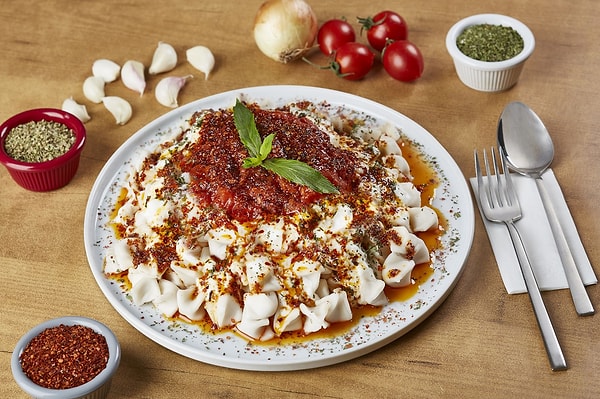
Mantı traces its roots back to Central Asia, where it was believed to have been brought to Anatolia by the migrating Turkic tribes thousands of years ago. Over time, mantı has become an integral part of Turkish culture, with each region adding its unique twist to the recipe. This dish holds a special place in Turkish cuisine and is often associated with family gatherings, celebrations, and special occasions.
The Art of Mantı Making:
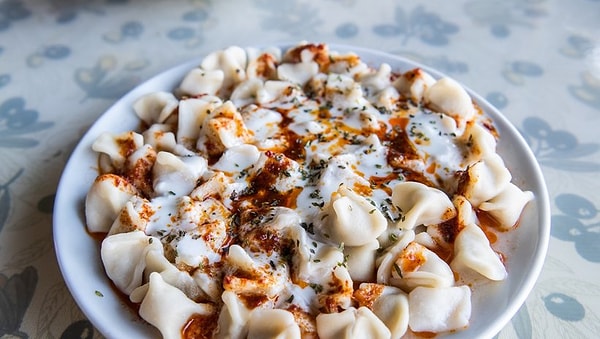
Making mantı is an art form that requires patience, precision, and a keen eye for detail. The process starts with preparing the dough, which is typically made using flour, water, and a pinch of salt. The dough is kneaded until it reaches the perfect consistency—soft, pliable, and elastic. It is then rolled out into thin sheets and cut into small squares, each about an inch in size.
The filling is the heart and soul of mantı. Traditionally, it consists of a mixture of ground lamb or beef, finely chopped onions, and a medley of spices such as cumin, black pepper, and paprika. The filling is carefully placed in the center of each dough square, and the corners are pinched together, creating a small pouch. This step requires dexterity and practice to ensure that the mantı is properly sealed, preventing any leakage during the cooking process.
Cooking Techniques and Variations:
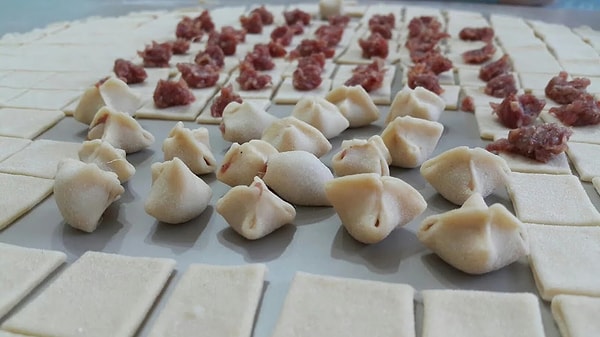
Once the mantı is assembled, it is ready to be cooked. There are several cooking techniques that can be employed, each yielding a slightly different result. The most common method is boiling, where the dumplings are gently simmered in salted water until they float to the surface. This cooking technique ensures that the dough is cooked through and the filling is tender and juicy.
Another popular cooking method is baking.
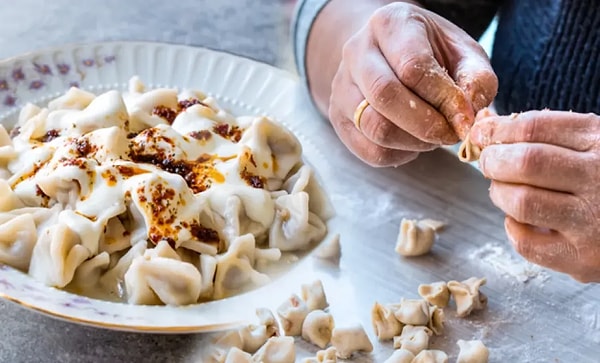
The assembled mantı is placed in a baking dish, covered with a tomato sauce, and baked in the oven until golden brown. This method adds a slightly crispy texture to the dumplings, enhancing the overall experience.
In some regions of Turkey, mantı is also prepared using a steaming technique. The dumplings are placed in a steamer basket and cooked over high heat, resulting in a softer texture that melts in your mouth.
Regional Variations and Accompaniments:
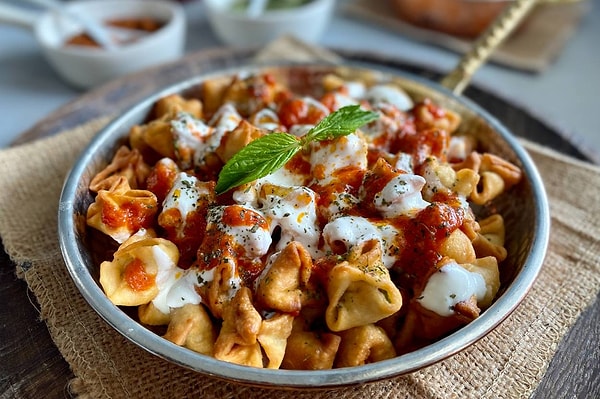
As mentioned earlier, Turkish cuisine is incredibly diverse, and mantı is no exception. Each region of Turkey has its unique take on this beloved dish, adding distinct flavors and ingredients to the traditional recipe.
For instance, in Central Anatolia, a region known for its spicy cuisine, the filling is often prepared with a generous amount of red pepper flakes, giving the mantı a fiery kick. In the southeastern region of Turkey, the filling may be mixed with herbs such as parsley or mint, adding a refreshing twist to the dish.
Mantı is typically served with a variety of accompaniments that elevate the flavors even further.

A classic combination includes a drizzle of melted butter, a generous dollop of tangy yogurt, and a ladleful of tomato sauce. The butter adds richness and enhances the savory notes of the dish, while the yogurt provides a creamy and cooling element that balances out the flavors. The tomato sauce, made with ripe tomatoes, garlic, and spices, adds a vibrant tanginess that ties all the components together.
In addition to these traditional accompaniments, other toppings and garnishes can be added to personalize the dish. Some people prefer to sprinkle sumac, a tangy and slightly citrusy spice, over their mantı for an extra flavor boost. Others may opt for a sprinkle of fresh herbs like cilantro or dill to add a touch of freshness. Additionally, a dusting of crumbled feta cheese or grated Parmesan can provide a delightful salty kick.
Cultural Significance and Social Customs:
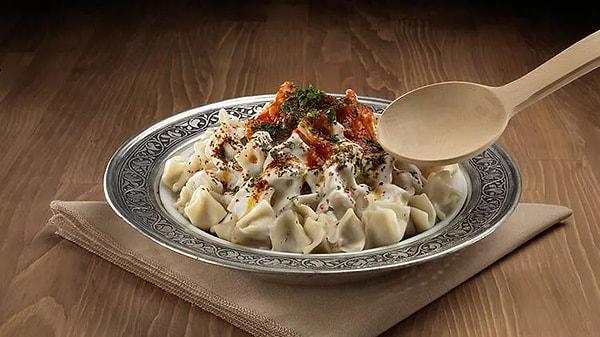
Beyond its culinary appeal, mantı holds cultural significance in Turkish society. It is a dish often associated with gatherings and celebrations, where families and friends come together to share a meal. The process of making mantı is often a communal effort, with multiple hands shaping the dumplings and sharing stories and laughter in the kitchen.
In some regions, there are social customs associated with mantı. For example, it is believed that the number of mantı on one's plate represents their worth in the household. Therefore, it is customary for the host to serve a generous portion to show respect and hospitality to their guests.
Mantı also has a place in Turkish wedding traditions. It is considered a symbol of abundance and fertility, and it is customary for the bride-to-be and her family to prepare mantı for the groom's family during the engagement process. This act symbolizes the bride's ability to take care of her future husband and showcases her culinary skills.
Mastering the Art of Mantı:
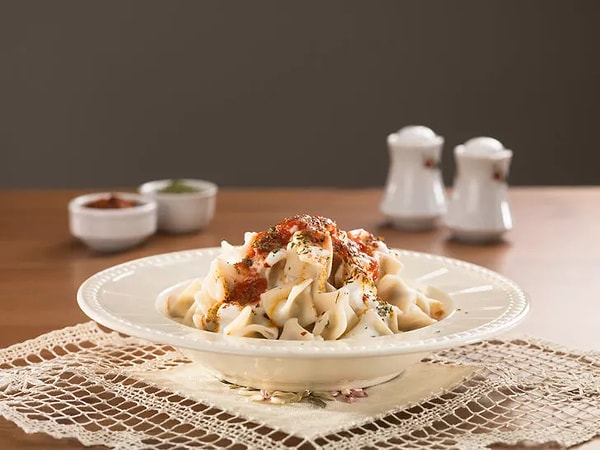
Mastering the art of making mantı requires practice, attention to detail, and a genuine passion for the craft. It is not just about following a recipe; it is about understanding the nuances of the dough, the perfect ratio of filling to dough, and the cooking techniques that yield the best results.
The key to achieving perfectly shaped mantı lies in the consistency of the dough and the precision in sealing the dumplings. The dough should be rolled out thinly and evenly, ensuring that the mantı cooks evenly and doesn't become overly doughy. When sealing the dumplings, it is important to press the edges firmly together, making sure there are no gaps that could cause the filling to leak out.
Cooking the mantı requires a delicate balance of time and temperature. Boiling the dumplings too vigorously can cause them to break apart, while undercooking them will result in a doughy texture. It is crucial to monitor the cooking process closely, ensuring that the mantı floats to the surface, indicating that they are cooked through.
Mastering the art of Turkish mantı is a journey that takes you deep into the heart of Turkish cuisine and culture.
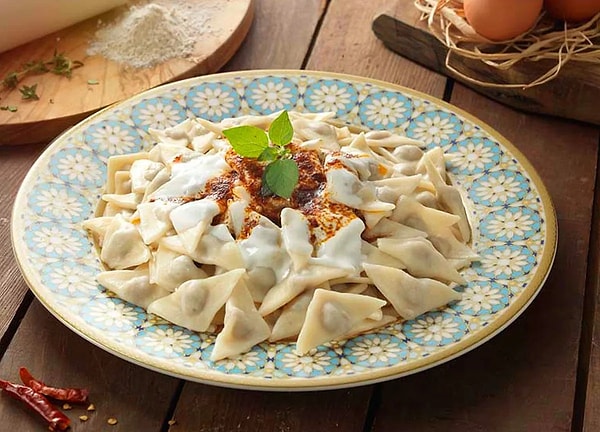
From the historical roots to the intricate techniques, each step contributes to the creation of a dish that is not just a meal but a sensory experience. By immersing yourself in the flavors, traditions, and customs surrounding mantı, you embark on a flavorful journey that connects you with generations of Turkish cooks and diners. So, gather your loved ones, roll up your sleeves, and indulge in the art of Turkish mantı—the epitome of a flavorful and communal dining experience.

Send Comment